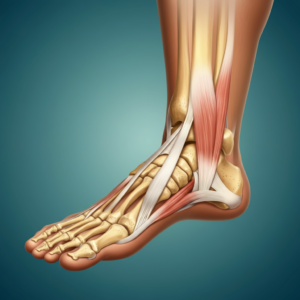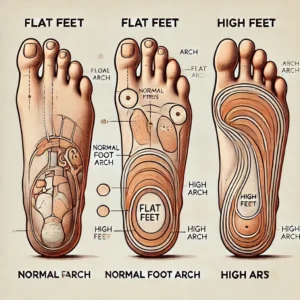The structure of your foot arch affects everything from your posture to your balance. A normal foot arch plays a crucial role in your daily movement, whether you’re walking to the coffee machine or running a marathon. It’s the foundation for distributing weight evenly and absorbing impact with every step.
To take your foot health a step further, explore this in-depth guide on Superfeet Trailblazer Comfort Insoles. These insoles are specially designed to support foot arches and enhance overall comfort during activities.

The Anatomy of a Normal Foot Arch
The foot arch is a natural curve on the bottom of your foot. Its design is a masterpiece of biomechanics, combining stability and flexibility. Here’s a breakdown of what makes up a normal foot arch:
Bones That Form the Arch
- Metatarsals: These five long bones in your forefoot connect your ankle to your toes and form the base of your foot arch.
- Tarsals: Found in your midfoot and heel, these bones include the talus, navicular, and calcaneus, which provide the arch’s structure.
Ligaments and Tendons
- Plantar fascia: This thick band of tissue supports the arch and absorbs shock with every step.
- Tendons (like the posterior tibial tendon): Tendons link your muscles to bones, ensuring your foot arch flexes and adapts as you move.
When these parts work together, a normal foot arch evenly distributes body weight and absorbs impact, reducing stress on the ankles, knees, and spine.
Benefits of Having a Normal Foot Arch
A proper foot arch offers more than just basic support. Here are some key benefits:
- Improved Posture
A normal foot arch ensures your spine stays aligned, making it easier to stand tall without extra effort.
- Reduced Risk of Foot Problems
Conditions like plantar fasciitis (heel pain caused by inflammation of the plantar fascia) are less likely to occur with a healthy foot arch.
- Enhanced Mobility and Balance
With a normal arch, movements become more efficient, improving stability for activities like running, jumping, or even standing on uneven surfaces.
Common Issues Linked to Abnormal Foot Arches
Not everyone is lucky enough to have a perfectly balanced foot arch. Here are common abnormalities and the risks they pose:
Flat Feet (Pes Planus)
Flat feet occur when your arch collapses, causing your entire foot to touch the ground.
Causes:
- Genetics
- Obesity
- Weak tendon support
Symptoms:
- Foot and ankle pain
- Difficulty standing for long periods
Risks:
- Increased likelihood of plantar fasciitis
- Risk of overpronation, which can lead to knee pain
High Arches (Pes Cavus)
High arches are the opposite problem—your arch is overly raised, leading to less contact between your foot and the ground.
Causes:
- Neurological conditions
- Heredity
Symptoms:
- Frequent foot and toe pain
- Instability during movement
Risks:
- Higher instances of stress fractures
- Risk of supination, causing ankle injuries
Both conditions can lead to back, hip, or knee discomfort if left untreated.
How to Identify a Normal Foot Arch
Wondering if your foot arches are normal? Here’s how you can find out:
The Wet Test
- Wet the sole of your foot.
- Step onto a piece of paper or a smooth surface.
- Observe the footprint:
- A full footprint usually indicates flat feet.
- Only the heel, ball, and outer edge show for high arches.
- A balanced mid-section indicates a normal arch.
Signs of a Healthy Arch
- No chronic foot pain or swelling.
- Even shoe wear patterns (not concentrated on inner or outer sides).
If you’re still unsure, consult a podiatrist who specializes in foot health.
Tips for Maintaining a Healthy Foot Arch
Keeping your arches in shape doesn’t have to be complicated. Consider these tips:
Wear Supportive Footwear
Invest in shoes that properly support your arches, especially for running or standing long hours. Look for features like cushioned insoles, firm midsoles, and wide toe boxes.
Use Orthotic Insoles
Orthotic inserts are designed to provide extra support for your arch. They come in a range of options and can address specific needs for flat feet or high arches.
Practice Arch-Strengthening Exercises
- Toe Curls: Scrunch a towel with your toes to engage your arch muscles.
- Calf Stretches: Loosen tight Achilles tendons.
- Arch Lifts: Slowly lift and lower your arches to work the small muscles in your feet.
By incorporating these into your routine, you can enhance the health and strength of your arches.

When to Seek Professional Help
Even with proper care, there are times when expert advice is necessary.
Signs to Watch For
- Persistent foot or heel pain
- Difficulty walking or standing for long
- Abnormal shoe wear patterns
Diagnostic Methods
A podiatrist may use tools like X-rays or gait analysis to identify arch issues and recommend treatment, ranging from physical therapy to custom orthotics.
Available Treatments
For more severe cases, options include:
- Custom orthotic insoles
- Physical therapy exercises
- Surgery (in rare cases)
Early intervention can save you years of discomfort and further complications.
Role of Lifestyle in Arch Health
Your daily habits have a significant impact on your foot arches:
- Weight Management
Excess weight increases pressure on your feet, potentially flattening your arches.
- Proper Hydration
Ligaments and tendons require hydration for flexibility and strength, especially under stress.
- Avoid Prolonged Standing
If your job requires standing for long periods, use anti-fatigue mats or take regular breaks to reduce strain on your arches.
Products and Tools for Arch Support
Here are some tools to keep your arches healthy and supported:
- Best Shoes for Arch Maintenance
Brands like Brooks, New Balance, and ASICS offer shoes tailored for various arch types.
- Arch Braces and Rollers
Arch braces offer added support, while rollers and massage balls help alleviate tightness and soreness.
- Customizable Insoles
Products like Superfeet or Powerstep insoles provide tailored support to maintain or restore a normal foot arch.
Take Care of Your Arches for a Better You
A normal foot arch isn’t just about comfort; it’s about living life pain-free, with better posture and mobility. By following these tips and staying proactive about your foot health, you can protect yourself from future issues and stay active for years to come.
Need professional advice or support products tailored to your needs? Consult a podiatrist or explore trusted arch-support products to give your feet the care they deserve.

